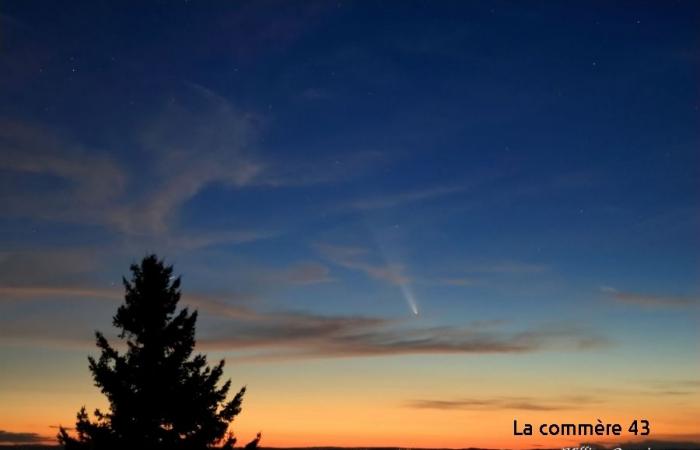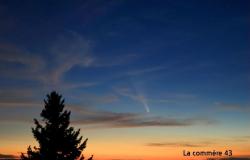This Sunday, October 13, comet C/2023 A3 (Tshuchinshan/Atlas) was photographed by two photographers from Saint-Just-Malmont and Saint-Maurice-de-Lignon. They share their photos with you.
Comet C/2023 A3 Tsuchinshan-ATLAS should be visible for a few weeks if the weather permits. Its changing position throughout the day is located around the west direction between Venus and the constellation Bouvier. Its visibility is possible between 1 hour and 1 hour 30 minutes after sunset. It is already visible to the naked eye and becomes remarkable with a pair of binoculars.
With its official name C/2023 A3 Tsuchinshan-ATLAS, this comet was discovered in 2023 by ATLAS, an automatic observatory located in South Africa, which detects small celestial bodies that could cross the Earth’s orbit. The comet was then found in earlier images taken by the Tsuchinshan Observatory located in China. Which earned it the name of the two organizations that discovered it. Currently, it is about 70 million kilometers from Earth.
Hervé Frayssignes photographed the comet from the heights of Saint-Maurice-de-Lignon towards the West (towards the Retournac valley), with an exposure time of 20 seconds on his Nikon D3000 camera.
Killian Quoniou, who had already made us appreciate his photos of the Northern Lights, is doing it again in Saint-Just-Malmont with this comet.






